Table of contents
Hemp ( Cannabis ) is one of the oldest useful and ornamental plants in the world. Unpeeled, raw hemp seeds come from cultivated hemp ( Cannabis sativa var. sativa ). They are a valuable food with many unsaturated fatty acids in a good omega-6 to omega-3 fatty acid ratio.
Use in the kitchen
Unpeeled hemp seeds are also known as hemp nuts. They are 3-4 mm in size and have a brown to green-gray color. Unpeeled hemp seeds taste very crunchy and have a nutty, slightly oily flavor. Hemp seeds are gluten-free and lactose-free.
Hemp seeds are used in a similar way to chia, poppy seeds and linseed as a topping for bread rolls. They also taste good in homemade fruit balls or muesli bars with raisins, cranberries or goji berries . They are popular as an ingredient for crispbread withpumpkin seeds or raw pizza base made from sprouted buckwheat and a topping of tomatoes, rocket, vegan mozzarella and green olives .
The gluten-free pea muesli can be perfectly refined with raw hemp seeds. Hemp seeds are a great topping for smoothie bowls and soups. They give pestos, spreads and dips a nutty, crunchy consistency.
To digest the unpeeled hemp seeds better, it helps to soak them in water for a few hours before use. The peeled hemp seeds taste a little finer and sweeter, but have fewer nutrients.
Hemp flour, hemp butter, hemp milk (EU: hemp drink) or hemp soup can be made from the unpeeled seeds. Hemp oil, which is obtained through cold pressing, also tastes excellent and is very healthy.
The oil contained in the seeds is very sensitive to heat, which is why the seeds should mainly be eaten raw and in their natural state. However, the seeds are also available roasted. Due to the formation of Maillard molecules when heated, we recommend only using them unroasted.
Vegan recipe for hemp drink made from hemp seeds
Ingredients: 100 g unpeeled hemp seeds, 500 ml water to fill, 500 ml water to mix, a little sweetener (e.g. agave syrup ) as needed.
Preparation: Finely grind the hemp seeds in a food processor or blender. Put it in a blender and fill it with water, then mix everything vigorously. Now strain the milk, e.g. with a tea strainer or a fine-mesh cloth. Add sweetener if necessary and mix again briefly. Finally, pour water over it and fill it into a bottle. This milk alternative will keep in the fridge for a few days.
Vegan recipe for spread with avocado and hemp nuts
Ingredients (4 servings): 2 avocados, 3 tablespoons fresh lemon juice, 3 tablespoons unpeeled (organic) hemp seeds, sea salt ,black pepper, some caraway seeds, whole and/or ground.
Preparation: Halve the avocados, remove the pit, scoop out the flesh with a spoon and mash it with a fork. Immediately drizzle the lemon juice over it and mix in the hemp seeds. Season with salt, pepper and caraway seeds. This spread tastes great on crispbread, wholemeal bread or as a dip for vegetable sticks.
Instructions for hemp sprouts
For hemp sprouts you need a clean sprouting jar, a plate and unpeeled, germinable (not roasted) raw hemp seeds. Hemp seeds from outside the EU are often incapable of germinating, and even peeled hemp seeds are no longer germinable.
If the sprouting jar is about 0.5 to 0.6 liters in size, about 2 tablespoons of unpeeled hemp seeds are enough. First, wash these seeds well and then put them in the sprouting jar (or a bowl) filled with water. Soak them for about 6 hours and then put them in a dark place. The optimal germination temperature for hemp is about 21-23 °C, so leave the sprouting jar in a warm room or near a radiator.
After the soaking time, pour the soaking water away and rinse the seeds well with water, then pour the water off again. Now place the germination jar with the mesh lid tilted on a small plate so that the remaining water can drip off. Hemp germinates in the dark, so it needs a dark place to germinate - or you can cover the jar with a cloth.
To ensure that the seeds always have enough moisture and that no mold can grow, they should be rinsed at least twice a day. To do this, pour fresh water into the glass and swirl the glass so that all the seedlings are covered and can absorb the water. This process can take a few minutes, then pour the water off and position the germination glass at an angle.
After about 3-4 days, the hemp begins to germinate; if you leave the seedlings in the sprouting jar for another day, sprouts will form. Seedlings or sprouts can be used immediately in salads, as a spread on bread or as a topping for other dishes. If you store the sprouts in the fridge, they stop developing and you can keep them there for a few more days.
However, sprouts taste best when they are as fresh as possible and the risk of mold is then very low.
Vegan recipes with unpeeled hemp seeds can be found under the note: " Recipes that have the most of this ingredient ".
| Not only vegans or vegetarians should read this: Vegans often eat unhealthily. Avoidable nutritional mistakes. |
Purchasing - Storage
Coop, Migros and Spar offer hemp seeds (sometimes only peeled), mostly organic. Denner, Volg, Aldi, Lidl, Rewe, Edeka, Hofer and Billa do not have hemp seeds in their standard range. Always organic, sometimes even Demeter, you can find unshelled (and also peeled) hemp seeds in health food stores, organic shops or organic supermarkets, such as Denn's Biomarkt or Alnatura . Hemp seeds can also be purchased online, where the country of origin is also listed. Since the area of cultivated hemp is increasing in Europe, there are usually regional products to buy too.
If possible, you should prefer organically produced, unpeeled, unroasted, unsalted hemp seeds in raw food quality when buying, so you are guaranteed an unprocessed product of the best possible quality.
The availability of unpeeled hemp seeds varies depending on the size of the store, catchment area, etc. You can find our recorded food prices for the DA-CH countries above under the ingredient image - and by clicking you can see their development at various suppliers.
Wild hemp ( Cannabis sativa var. spontanea ) is found cultivated and wild in all temperate to tropical zones almost worldwide. It normally does not reach more than about 3 meters in height. The seeds are somewhat smaller than those of the cultivated form. 1
Storage tips
Hemp seeds should always be stored in a cool, dry place, protected from light, and ideally in an airtight container. If the unpeeled seeds are damaged, the oil will leak out, which will quickly oxidize and then taste rancid.
Ingredients - Nutritional values - Calories
Unpeeled hemp seeds have a very high energy content of around 464 kcal/100g. This is mainly due to the high fat content of around 33 g/100g, which corresponds to 46.7% of the daily requirement. Hemp seeds contain a lot of protein (26 g/100g) andfiber (30 g/100g). The carbohydrate content is 32 g/100g. 3
The seeds are a good source of protein because they contain all eight amino acids that are essential for humans. They contain proteins such as globulin edestin and are very easy to digest, but the low lysine content limits the protein value. 4 Lysine is, however, present in sufficient quantities in many pulses, such as millet and rice .
With 5.4 g/100g, hemp seeds are rich in alpha-linolenic acid (omega-3). Linoleic acid (omega-6) is contained at 21 g/100g. Thanks to the ratio of around 3:1 (LA:ALA), hemp seeds are considered very healthy (see effects on health).
Unpeeled hemp seeds have a high manganese content. With 3.6 mg of manganese per 100 g, around 56 g of unpeeled hemp seeds cover the entire daily requirement of this trace element. Other good sources of manganese are wheat germ (13 mg), wheat bran (12 mg), teff (9.2 mg) and pine nuts (8.8 mg). Spices and dried herbs also contain a lot of manganese. 3.28
Hemp seeds contain a lot of magnesium, with 520 mg/100g. Wheat bran (611 mg) anddried pumpkin seeds (592 mg) have similar values. 3.28
Unpeeled hemp seeds also contain phosphorus, zinc, potassium, iron and small amounts of calcium . The proportion of B vitamins, especially vitamin B1 (thiamine), is relatively high. 3
The complete ingredients of unpeeled hemp seeds, the coverage of the daily requirement and comparison values with other ingredients can be found in our nutrient tables below the ingredient image.
Effects on health
Are hemp seeds healthy? Hemp seeds have a favorable ratio of omega-6 to omega-3 fatty acids at 3:1. The ratio between the pro-inflammatory omega-6 fatty acids (linoleic acid, LA) and the anti-inflammatory omega-3 fatty acids (alpha-linolenic acid ALA) is important for maintaining health. Flax seeds have an even better omega-6 to omega-3 ratio at 1:4 (LA:ALA) and chia seeds at 1:3.
Linoleic acid forms arachidonic acid (ARA), which is converted into hormone-like eicosanoids that have an inflammatory and vasoconstricting effect, promote arteriosclerosis and the sensation of pain. Alpha-linolenic acid forms eicosapentaenoic acid (EPA) and docosahexanoic acid (DHA), which form eicosanoids that have anti-inflammatory, antithrombotic and bronchodilating and vasodilating effects. Since both conversion processes use the same enzymes, they compete with each other. 9
For health reasons, it is therefore advisable to consume equal amounts of linoleic acid (omega-6) and alpha-linolenic acid (omega-3) in the diet. However, in the Western diet, the pro-inflammatory omega-6 fatty acids usually predominate compared to the anti-inflammatory omega-3 fatty acids. According to Dr. Michael Greger, the ideal omega-6 to omega-3 ratio is 1:1 in order to maintain a balance between the two conversion processes in the body. The guidelines of the Federal Nutrition Commission ( EEK ) are less strict and recommend that the ratio be reduced to at least 5:1. 7
Unpeeled hemp seeds have a very high fiber content, which supports digestion and helps cleanse the intestines. In addition, an increased fiber content increases the feeling of satiety in the body and regulates blood sugar levels. However, too many unpeeled hemp seeds can lead to an unpleasant feeling of fullness or flatulence. How many hemp seeds per day? To start with, you can take about ½ tablespoon per day. This can be increased to 1 tablespoon per day, depending on how well you tolerate them.
Hemp seeds can be purchased in regular grocery stores. Cannabis products such as flowers and leaves can sometimes be found in specialty stores. In most countries, a doctor's prescription is required to purchase cannabis products containing THC, as these products are prohibited under the Narcotics Act. "Medical cannabis" is used in medical practice to treat chronic pain, spasticity and cramps, as well as nausea and loss of appetite caused by chemotherapy. 6
Secondary plant substances
Many of the health effects of hemp seeds can be attributed to the secondary plant substances they contain. Our article on secondary plant substances provides an overview of the classification of substance groups, their occurrence in foods and possible effects on humans.
Hemp seeds (unhulled and shelled) contain the following secondary plant substances:
- Isoprenoids: Terpenes: Monoterpenes (Myrcene, Limonene); sesquiterpenes (α-caryophyllene, α-caryophyllene, β-caryophyllene); diterpenes (phytol, neophytadienes); tripertenes (Friedelin, Epifriedelanol); triterpenoids (steroids); Tetraterpenes and terpenoids ( carotenoids ) 15
- Polyphenols: Phenolic acids: Hydroxybenzoic acids (gallic acid); Flavonoids: Flavonols (kaempferol, quercetin), flavones (luteolin), flavanones (naringin, naringenin); Lignans (lignanamides); Stilbenes (dihydrostilbenes including cannabistilbene I, cannabistibene II) 8.15
- Protease inhibitors: phytic acid
However, it should be noted that the composition of secondary plant substances in hemp seeds can vary depending on the variety, time of harvest and growing conditions. Therefore, quantities are only of limited use and should only be understood roughly. 8
Germinating hemp seeds increases the content of polyphenols, flavonoids and flavonols. 19 It also reduces phytic acid, which improves the absorption of minerals. For more information, see our article Phytic acid or phytate and soaking or germination .
The available studies often do not differentiate between unpeeled and peeled hemp seeds. However, it was found that the shell has a higher total phenol content than just the kernel of the oat seeds. For nutritional reasons, you should therefore prefer unpeeled hemp seeds. 8 Polyphenols have an antioxidant effect, ie they bind free radicals and oxidants and thus reduce oxidative cell stress . In the long term, oxidative stress leads to chronic diseases. 9
Cannabis is known for its phytocannabinoids (transformation products of some terpene phenols), which have not been found in any other plant than hemp. 10 Cannabinoids are not present in hemp seeds or are only present in very small quantities. 19 Hemp produces the cannabinoids in the glandular hairs in the area of the inflorescence. They are also present in small quantities in leaves and stems. 15,26
The effects of THC (tetrahydrocannabinol) are euphoric, stimulating, muscle relaxing, antiepileptic, anti-nausea, appetite stimulant, bronchodilator, blood pressure lowering, mood-enhancing and pain-relieving. CBD (cannabidiol) has no psychoactive effect, but has a sedative and pain-relieving effect. CBN (cannabinol) is slightly psychoactive, lowers intraocular pressure and is antiepileptic. CBG (cannabigerol) is not psychoactive, but has a calming, antibiotic and also intraocular pressure-reducing effect. CBC (cannabichromene) is also calming and promotes the pain-relieving effect of THC. 1.15
Dangers - Intolerances - Side effects
Hemp is considered a mild allergen, although severe allergic reactions have been documented in a few cases. However, these often affect hemp containing THC. Known hemp allergens are mainly found in roots, leaves and flowers. Hemp seeds contain only one known allergen. 22
Do hemp seeds have an intoxicating effect? Hemp seeds contain little or no THC (tetrahydrocannabinol). 19 However, during harvesting, the seeds can become contaminated by the leaves and flowers, which contain cannabinoids. This is why there is evidence of THC in hemp seeds and hemp seed oil, some of which even exceed the stipulated maximum level. Contamination can be reduced and avoided through process-related measures. 17
Folk medicine - natural medicine
Rubbing cannabinoid-containing hemp extracts ( Cannabis sativa ssp. indica ) into injured muscles and tendons is said to have a soothing effect on severe pain. 11 Cannabis ruderalis was used in Mongolian and Russian folk medicine to treat depression. The THC content is around 40%. 1
The flowers and leaves of the female plant were used in China and Egypt as an antispasmodic and sedative. 13
Ecological footprint - animal welfare
The CO2 footprint is primarily used to assess the climate friendliness of a food. This depends on various aspects such as cultivation method (conventional/organic), seasonality, country of origin, processing, transport and, if applicable, packaging. Carboncloud gives a value of 1.33 to 2.63 kg CO2 eq /kg for hemp seeds ex field (Northern Europe or Europe). Flaxseeds have a slightly lower value between 1.07 and 2.58 kg CO 2 eq/kg (Southern Europe). 18
Hemp seeds have an average water footprint of 3685 l/kg. In comparison, poppy seeds use 2188 l/kg, linseed 5158 l/kg and sesame seeds 9371 l/kg. 20
For detailed explanations of various sustainability indicators (such as ecological footprint, CO2 footprint, water footprint), see our article: What does the ecological footprint mean?
Animal protection - species protection - animal welfare
Although industrial hemp does not produce fragrant nectar and does not offer colorful flower petals, bees are attracted to hemp. Hemp plants do not actually depend on bees for pollination because they use wind pollination. However, the male plants produce a lot of pollen and this serves as a source of protein for the bees. There is also hardly any food available for bees during this time, which is why hemp is an excellent source of food in late summer. Bees lack cannabinoid receptors, which is why there is no need to worry about a relaxing or intoxicating effect on bees. 21 According to Rätsch, the honey produced from it can be quite psychoactive - depending on the type of hemp grown. 1
Worldwide occurrence - cultivation
Hemp is one of the oldest plants domesticated by humans. Through artificial selection, a wide range of varieties and biotypes have been created for various uses such as fiber, food, medicine and drugs. 23
In the 20th century, the systematics within the genus Cannabis was controversial. In addition to the model of three different species, there was also a description of it as a single species with numerous subspecies. Today it is assumed that hemp ( Cannabis ) is a monospecific species. These are divided into narcotic subspecies (drug hemp with a THC content of more than 1%) and non-narcotic subspecies (fiber hemp, industrial hemp with a THC content of less than 0.2%), with domesticated and ruderal varieties of each. 23,17 Two known subspecies are Cannabis sativa ssp. sativa (European Gene Center) and Cannabis sativa ssp. indica (Asia Gene Center). 23 Both can have low and high THC and CBD contents and there are many hybrids. A possible third subspecies is Cannabis sativa ssp. ruderalis, although this is often considered a variant of Cannabis sativa ssp. sativa and not a separate subspecies.
The ancestor of today's cannabis plants comes from the region around Tibet. The time and place of domestication is the subject of research, although it is assumed to have occurred in central/southeast China and/or the Caucasus region. 23
Based on finds in Georgia, the first use of wild-harvested hemp as a fiber can be dated to around 30,000 years ago. 2 Finds show that hemp cultivation began around 5,000-6,000 years ago in China. From ancient times to the present day, hemp has been used to make clothing, hemp ropes, cords, ship rigging, bandages and paper. 12 In Europe, hemp was also used as the most important textile fiber until the 19th century. 13 Since the mid-1980s, the cultivation of industrial hemp has been increasing again, and in the 1990s, EU countries even subsidized its cultivation very intensively. The fibers are now used primarily in textile production and also as insulation material. 14
Cultivation - Harvest
Hemp plants are annual and usually dioecious (male and female plant). 23
In Germany (and other EU countries), the cultivation of fiber or industrial hemp (with THC content below 0.2%) has been permitted again since 1996. 17
Sowing takes place between mid-April and May using grain drills. Hemp is very easy to care for, there is hardly any need for weed control and, due to its insect-hostile ingredients, hardly any plant protection measures are required. The deep-growing roots loosen the soil, which is particularly useful when crop rotation is taking place. 5 As a self-tolerant plant, hemp also accepts cultivation on the same area for several years in a row.
The seeds are harvested from September onwards, when the seeds fall out of the flower head when shaken. There is no regular ripening, which makes it difficult to determine the harvest time. Combine harvesters are used to cut off the top part of the hemp plant. After threshing, the hemp seeds are cleaned and then dried. 27
Risk of confusion
It is most likely that it will be confused with THC-containing hemp, which is used as a drug and medicinal plant. The cultivation of this type of hemp is prohibited by law in most countries.
Further information
Hemp seeds come from industrial hemp ( Cannabis sativa ssp. sativa ), which belongs to the genus Cannabis or the family of hemp plants (Cannabaceae). Thanks to breeding, there are now a large number of cannabis varieties with different levels of THC and CBD.
Since 2024, the cultivation of THC-containing hemp for personal consumption has been permitted in Germany. 24 In Switzerland, the THC level must be below 1% and in Austria below 0.3%. 25,26
Alternative names
Hemp seeds are also called hemp nuts or sometimes hemp hearts.
The use of common names for the hemp plant varies from region to region and a distinction is usually made between female and male parts of the plant: Hämp, Hanaf, Hanel, Hanif, Hannarpe, Hanof, Hanuf, Harf, Hauf, Hemp, Henef, Hennig and Werch. 16
In English, the hemp plant is known by its Latin name Cannabis . Hemp seeds are called hempseed(s) or hemp seed(s). Unpeeled hemp seeds are called unpeeled or unshelled hemp seeds.
Other Latin synonyms for Cannabis sativa are: C. americana, C. chinensis, C. culta, C. erratica, C. generalis, C. gigantea, C. intersita, C. lupulus, C. macrosperma, C. sativa monoica, C. sativa ssp . culta. 1 The synonyms for popular names listed by Rätsch are too numerous to list here. 1
Other uses
Industrial hemp is primarily grown to produce hemp fibers. In addition to the hemp seeds and the oil extracted from them (hemp seed oil), there are also uses for the flowers and leaves, for example for the production of essential hemp oil. Seeds and press residues from oil extraction also serve as high-quality animal feed.
Bibliography - 27 Sources
| 1. | Rätsch C. Enzyklopädie der psychoaktiven Pflanzen. Botanik, Ethnopharmakologie und Anwendung. AT Verlag: Aarau. 1998. 14. Aufl. 2018. |
| 2. | Clarke RC, Merlin MD. Cannabis. Evolution and Ethnobotany. Chapter 5: History of Cannabis use for fiber. University of California Press. Berkeley and Los Angeles. 2013. |
| 3. | BIO Hanfsamen (ÖNWT2.0 H424100). |
| 4. | House J, Neufeld J, Leson G. Evaluating the quality of protein from hemp seed (Cannabis sativa L.) products through the use of the protein digestibility-corrected amino acid score method. Journal of Agricultural and Food Chemistry. 2010;58(22):24. |
| 5. | Pini U. Das Bio-Food Handbuch. Ullmann: Hamburg, Potsdam. 2014 |
| 6. | Bundesamt für Gesundheit: Medizinische Anwendung von Cannabis. |
| 7. | Schweizerische Eidgenossenschaft EKK Eidgenössische Ernährungskommission. Fette in der Ernährung. 2006. |
| 8. | Leonard W, Zhang P et al. Hempseed in food industry: Nutritional value, health benefits, and industrial applications. Compr Rev Food Sci Food Saf. 2020;19(1):282-308. |
| 9. | Biesalski HK, Bischoff SC, Pirlich M et al. Ernährungsmedizin. 5. Auflage. Thieme: Stuttgart, New York. 2018. |
| 10. | Altmeyer Enzyklopädie. Altmeyer P. Cannabinoide. 2024. |
| 11. | Weiss RF. Lehrbuch der Phytotherapie. 5. Auflage. Stuttgart. 1982. |
| 12. | Steudel J. Der Verbandsstoff in der Geschichte der Medizin: Ein kulturhistorischer Überblick. Düren. 1964. |
| 13. | Delaveau P, Lorrain M, Mortier F, Rivolier C, Schweitzer A. Geheimnisse und Heilkräfte der Pflanzen. Zürich: Das Beste; 1978. |
| 14. | Steldinger M. Informationen zum Anbau von industriellem Hanf. Hanfmuseum.de Berlin. |
| 15. | Radwan MM, Chandra S et al. Cannabinoids, Phenolics, Terpenes and Alkaloids of Cannabis. Molecules. 2021;26(9):2774. |
| 16. | Pritzel GA. Jessen C. Die deutschen Volksnamen der Pflanzen. Neuer Beitrag zum deutschen Sprachschatze. Cohen P. Hannover 1882. |
| 17. | Niedersächsisches Landesamt für Verbraucherschutz und Lebensmittelsicherheit. Superfood Hanf: Wie hoch sind die Δ9-Tetrahydrocannabinol-Gehalte in hanfhaltigen Lebensmitteln? |
| 18. | Carbon Cloud: Hempseed (Northern America), Hempseed (Europa), Linseed (Southern Europe), Linseed (Southern America). |
| 19. | Cerino P, Buonerba C et al. A Review of Hemp as Food and Nutritional Supplement. Cannabis Cannabinoid Res. 2021;6(1):19-27. |
| 20. | Mekonnen MM, Hoekstra AY. The green, blue and grey water footprint of crops and derived crop products. Hydrol Earth Syst Sci. 2011;15(5):1577–1600. |
| 21. | O'Brien C, Arathi HS. Bee diversity and abundance on flowers of industrial hemp (Cannabis sativa L.) Biomass and Bioenergy. 2019;122:331-335. |
| 22. | Mamone G, Picariello G et al. Production, digestibility and allergenicity of hemp (Cannabis sativa L.) protein isolates. Food Res Int. 2019 Jan;115:562-571. |
| 23. | Rull V. Origin, early expansion, domestication and anthropogenic diffusion of Cannabis, with emphasis on Europe and the Iberian Peninsula. Perspectives in Plant Ecology, Evolution and Systematics. 2022;55:125670. |
| 24. | Bundesministerium für Gesundheit: Fragen und Antworten zum Cannabisgesetz. |
| 25. | Bundesamt für Gesundheit: Geltende Rechtslage von Hanf- und Cannabisprodukten (2024). |
| 26. | Österreichische Agentur für Gesundheit und Ernährungssicherheit GmbH: Hanf. |
| 27. | FiBlL. Biohanf - Vielseitiger Hanfanbau - Ernteprodukte und Möglichkeiten. Merkblatt Ausgabe Schweiz Nr. 1266, 2023. |

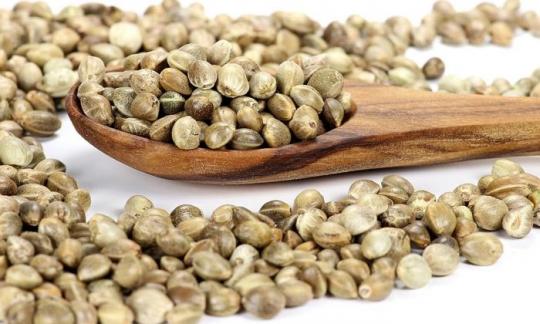

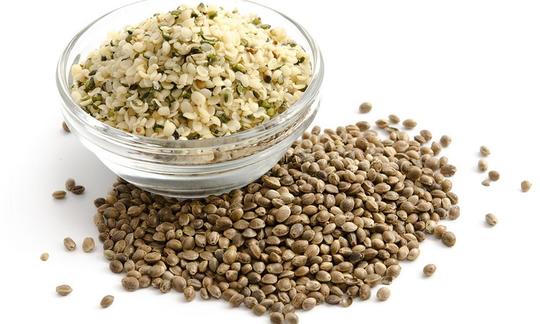

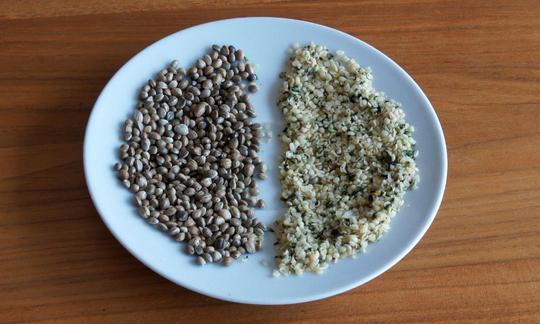

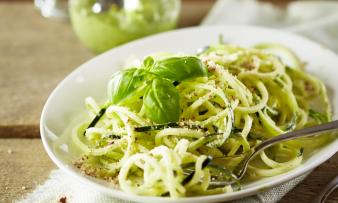

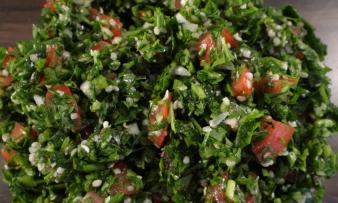





Comments